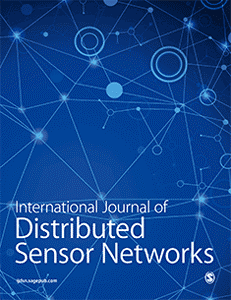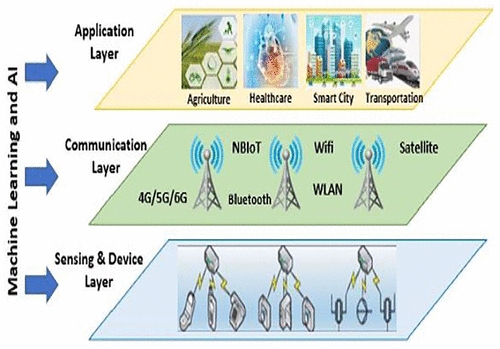


International Journal of Distributed Sensor Networks

This journal is a peer-reviewed open-access journal focusing on the application research of sensor networks.Impact Factor: 1.640.
In recent years, advancements and integration in sensor, information processing, and communication technologies have shaped today’s Internet of Things (IoT). The rapid increase in data and service demands due to the proliferation and development of mobile internet and IoT has introduced new challenges to the IoT landscape. The rapid growth of IoT sensors and their related devices has placed immense pressure on existing IoT and distributed sensor network infrastructures.
Emerging technologies and intelligent solutions can play a compelling role in meeting these new requirements, driving the development of intelligent architectures and services within the IoT. Consequently, a new interdisciplinary field has emerged, known as the Artificial Intelligence Internet of Things (AIoT). AIoT has begun to gain significant attention from researchers and industry professionals. The widespread application of Artificial Intelligence (AI) technologies has led to the emergence of more AIoT applications. These applications are capable of executing machine learning or deep learning algorithms and processing relevant issues in real-time. However, the limitations of IoT devices in terms of computation, storage, and communication resources pose challenges for the design of related applications.

Recently, Professor Cheng Jiapei from Xi’an Jiaotong-Liverpool University and colleagues published a research paper titled “Artificial Intelligence Internet of Things: A New Paradigm of Distributed Sensor Networks” in theInternational Journal of Distributed Sensor Networks.
The paper reviews the latest developments in AIoT and its various computational frameworks, highlighting the challenges and opportunities presented by effectively deploying AIoT technologies to address various complex application issues.

The article mainly analyzes the integration of AI within the entire IoT architecture, focusing on four aspects: (1) AIoT architecture, technologies, and hardware platforms; (2) AIoT sensors, devices, and energy approaches; (3) AIoT communication and networking; (4) AIoT applications. The first aspect relates to the combination of AI and edge computing, which is a key technology for AIoT. The remaining three aspects aim to apply and embed AI and machine learning technologies to design and implement various IoT layers and structures.
The AIoT consists of three layers: (1) sensing and device layer; (2) communication and network layer; (3) application layer. The AIoT aims to integrate AI and machine learning technologies into the sensing, communication, and application layers to achieve a high-performance IoT infrastructure. Figure 1 illustrates the concept of AIoT and its general layered structure.

Figure 1: AIoT Architecture and Layers
The integration of AI and IoT allows for the utilization of AI tools to bring intelligence and decision-making capabilities into various IoT applications and systems. This integration helps solve multiple IoT issues. AIoT focuses on providing rapid services, assisting in better and faster ways to unleash the potential of data utilization. The article discusses the integration of AIoT applications from eight perspectives: (1) energy, smart grids, and AIoT; (2) industry, smart buildings, and AIoT; (3) vehicles, smart transportation, and AIoT; (4) education, smart entertainment, and AIoT; (5) biomedicine, smart health, and AIoT; (6) environmental protection, smart agriculture, and AIoT; (7) robotics and computer vision in AIoT; (8) security in AIoT.
Additionally, the article discusses the integration of AIoT with various emerging technologies (such as mobile edge computing, software-defined networks, 5G/6G cellular networks, etc.), clarifying the issues and challenges that currently need to be addressed for the deployment of AIoT in diverse and complex real-world environments.
For more details, please click the lower left corner 【Read Original】 to read or download the full text!
END
Public Account ID: SAGE

SAGE Academic Publishing
SAGE is a global independent academic publisher founded by Ms. Sara Miller McCune in 1965, aiming to support valuable knowledge dissemination and global education. SAGE collaborates with over 400 professional academic associations to publish more than 1000 high-quality academic journals.

Long press to scan the QR code and follow SAGE.